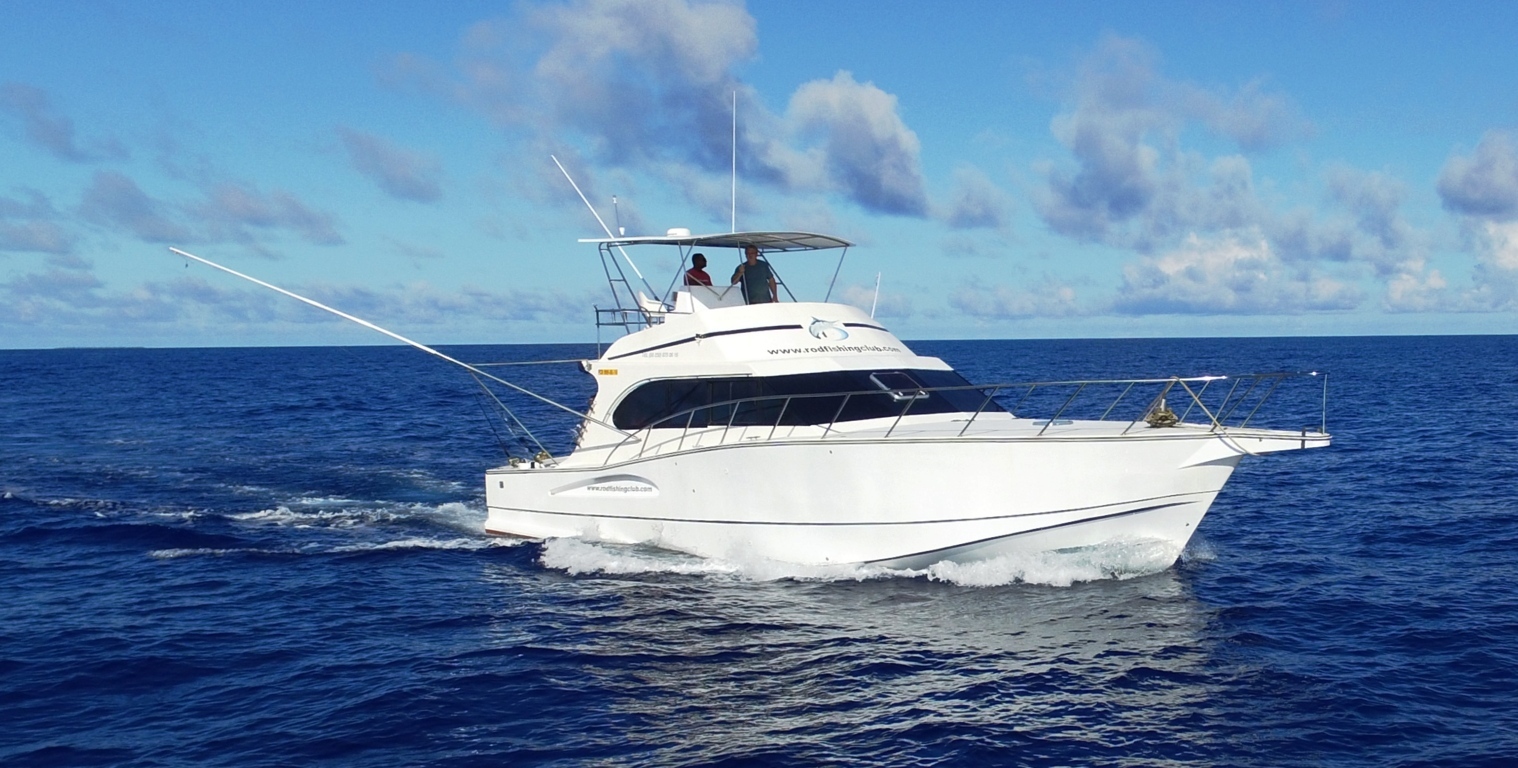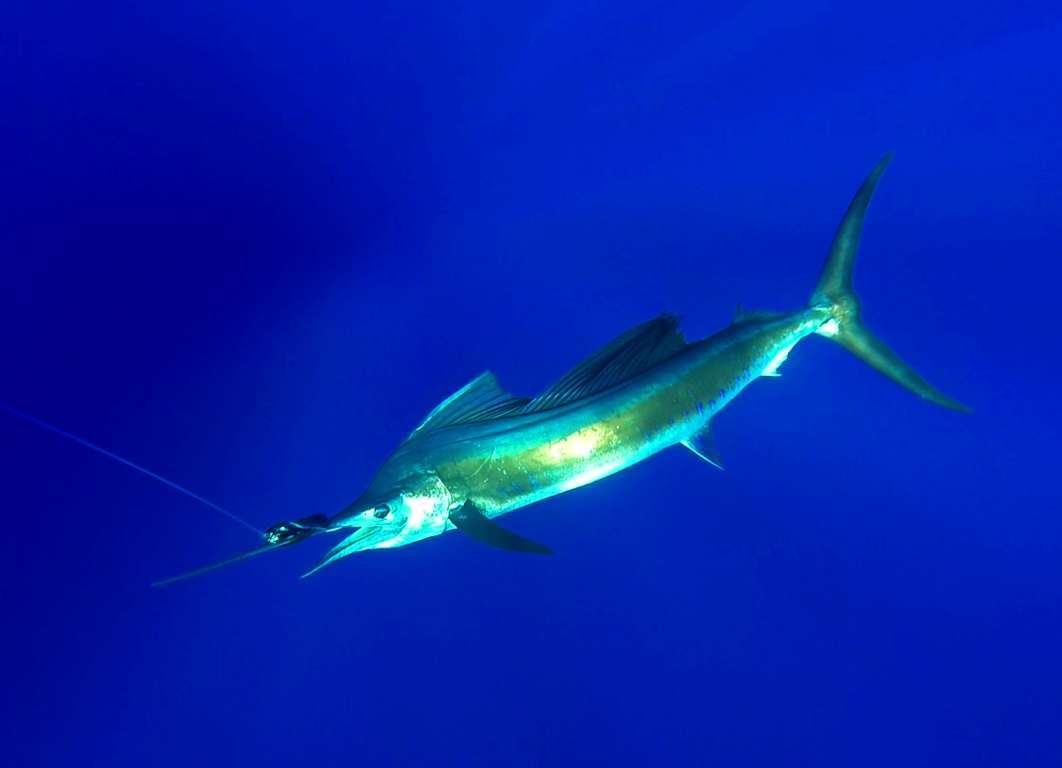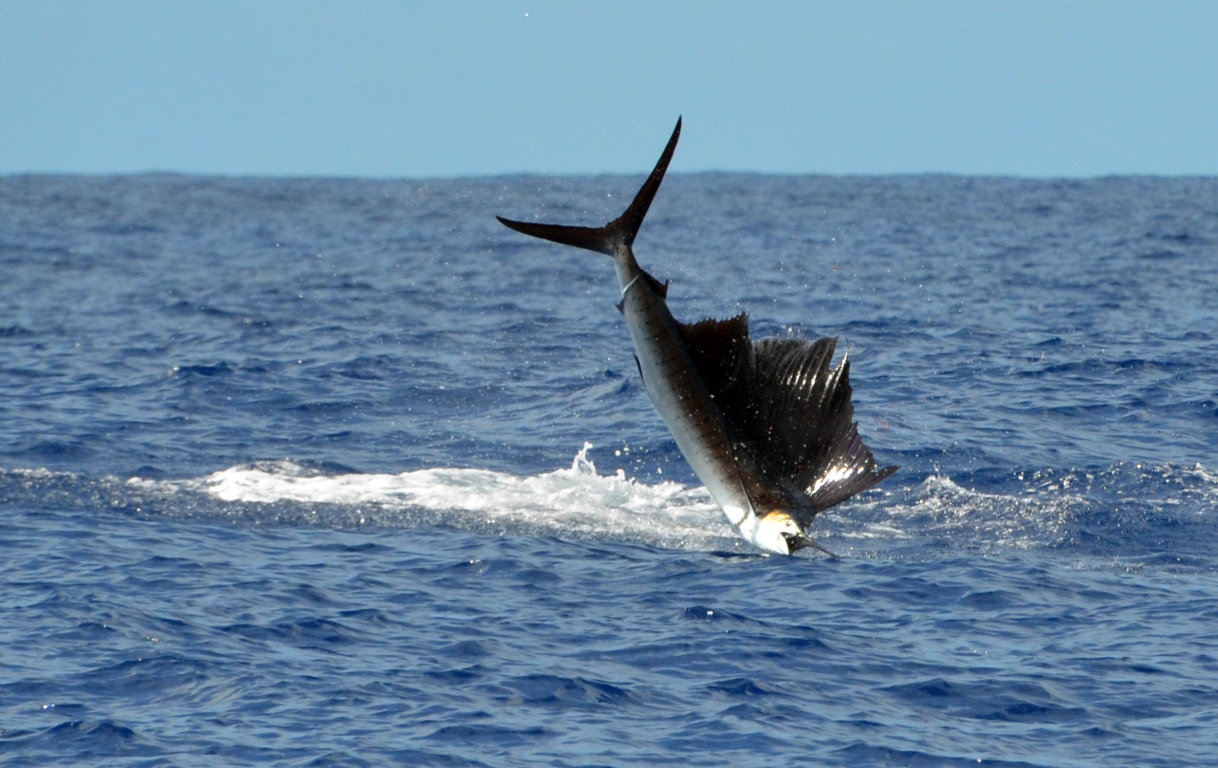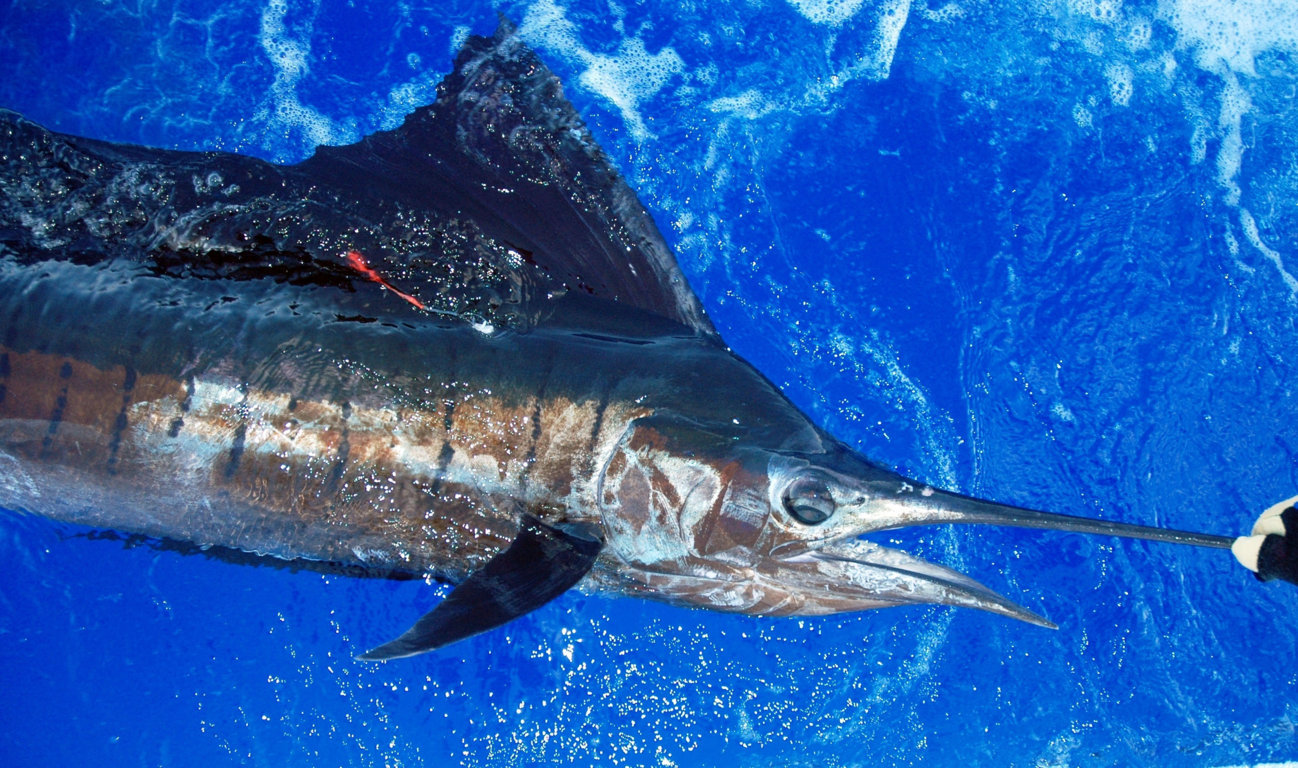
SAILFISH (istiophorus platypterus)

SAILFISH CARACTERISTICS
This is probably the most beautiful billfish… and maybe the fastest.
Despite its round, thin and sharp bill, its main characteristic is this huge dorsal fin from neck to tail and which has the shape of a big deep blue or cobalt sail sprinkled with black dots. Its silver belly is striped with vertical bluish stripes. Its flat body favours numerous spectacular jumps achieved during fight.
We can meet sailfish in tropical o subtropical waters in temperatures from 22°C to 30°C. It measures an average of 1,7m to 2,3m (bill not included) and weights about 50kg.
IGFA recognizes 2 species of sailfish:
- Atlantic sailfish is the smallest. 63kg is the IGFA record for this specie, caught in Guinea Bissau on 29 November 2007.
- Pacific sailfish is the biggest. The IGFA record is 100.24kg in Equator on 12 February 1947.

SAILFISH BEHAVIOUR AND REPRODUCTION
In Rodrigues area, sailfish lives on the continental plateau and close to the barrier reef. It explores the superior layer of oceans in small groups.
Female can lay up to 4.5 millions eggs. On blossoming, larva measures 3mm and jaw (bill) only develops from 6mm. At 20cm, this juvenile is a nice tiny sailfish, will the adults’ characteristics!
As it grows quickly, it reaches sexual maturity at 2 years and a half or 3 years old and may live until 13 years old.
FEEDING OF SAILFISH
Its large sail enables it to gather small fish into bait ball. It extracts its food from shelf borders, such as small pieces (yellowfin tuna juveniles, flying fish, bonitos, shrimps or cephalopods).



SAILFISH FISHING TECHNIQUES
According to sport fishing fanatics, sailfish deserves light line for the fight to be fair. It is sought after for its beauty and its acrobatic behaviour. When it jumps, its S or C shaped contortions will not leave you insensitive in front of so much elegance. It often remains static, exhausting itself in aerial jumps, facilitating the anglers’ work.
Different techniques can be employed:
- Speed or half-speed trolling with lures at surface.
- Slow trolling with live baits is the most efficient: small bonito, mackerels or other small pelagic fish. Generally, we catch small bonitos (500 to 700gr) during April that appear like candies to sailfish.
- Slow trolling with dead bait.
- We can also attract it with a teaser to excite it (Switch & bait technique), using lures assembled or not with bait.
Very selective, drop-back might be quite long, even if sometimes strike is straight while fishing on live or dead bait.
